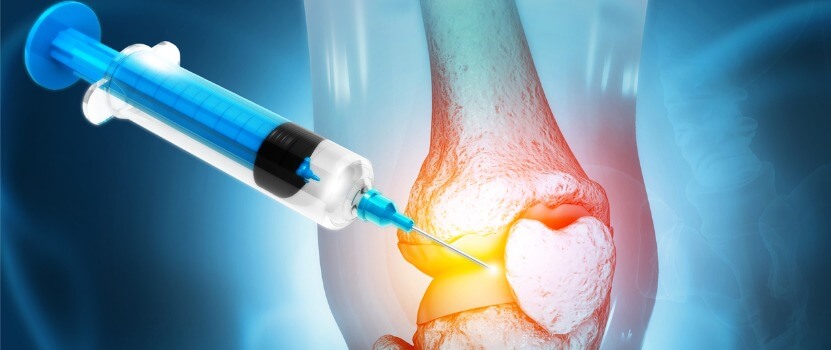Stem cell therapy has gained immense popularity in recent years as a promising avenue for treating various medical conditions, injuries, and chronic diseases. This innovative approach to healthcare offers the potential to regenerate damaged tissues and promote healing, but one question that frequently arises is whether stem cell therapy is painful. In this blog post, we’ll explore the realm of stem cell therapy and shed light on what patients can expect when pursuing regenerative medicine.
Understanding Stem Cell Therapy
Before delving into the pain aspect of stem cell therapy, it’s essential to grasp the fundamental concepts behind this groundbreaking treatment. Stem cells are undifferentiated cells with the unique ability to transform into different cell types, making them essential for tissue repair and regeneration. They can be sourced from various places within the body, such as bone marrow, adipose tissue (fat), or umbilical sources.
Stem cell therapy involves harvesting these stem cells from the patient’s own body or a donor and then administering them to the target area requiring treatment. The idea is to promote natural healing and regeneration, potentially avoiding invasive surgeries or long-term medication.
Is Stem Cell Harvesting Painful?
The level of pain experienced during stem cell therapy varies depending on several factors, including the source of stem cells, the method of administration, the patient’s pain threshold, and the underlying condition being treated. Let’s break down these factors to provide a clearer picture of what to expect:
Source of Stem Cells
- Bone Marrow: Extracting stem cells from the bone marrow can be a somewhat painful procedure. It typically involves the use of a needle to aspirate the marrow from the pelvic bone or sternum. This process may cause discomfort and pain, but it’s usually manageable. Since this is more uncomfortable and provides many fewer cells than extracting from fat, we do not use bone marrow at Innovations Medical.
- Adipose (Fat) Tissue: Stem cells can also be obtained from adipose tissue, which is less painful than bone marrow extraction. A small liposuction procedure collects fat cells, which are then processed to isolate the stem cells. This is minimally invasive and done under local anesthesia. It produces up to 1000 times as many cells as bone marrow. All procedures at Innovations Medical are done using this method.
- Umbilical Cord Blood or Placental Tissue: Patients who opt for stem cells from donor sources (umbilical cord blood or placental tissue) have no discomfort associated with the initial extraction. The concern is about the number of cells that are still living at the time of the procedure.
Method of Administration
There are two methods of administration for this. The first method is by injection. In many cases, stem cells are delivered via injection directly into the targeted area. The pain experienced during the injection is usually mild and comparable to any other medical injection. Patients might feel a brief pinprick or a slight burning sensation at the injection site.
The second method is through Intravenous (IV) Infusion. If stem cells are administered intravenously, the pain is minimal and akin to a standard IV procedure. Patients may experience a slight discomfort at the needle insertion site, but this subsides quickly.
Patient’s Pain Threshold
Individual pain thresholds vary from person to person. Some individuals may experience minimal pain, while others might find the procedure more uncomfortable. It’s crucial to communicate your pain tolerance and concerns with your healthcare provider to ensure you receive adequate pain management, if necessary.
Pain Management During Stem Cell Therapy
Healthcare providers are well aware of the potential for discomfort during stem cell therapy and prioritize patient comfort and safety. To mitigate pain, medical professionals may employ various pain management strategies:
- Local Anesthesia: For procedures involving needle insertions or minor surgeries, local anesthesia may be used to numb the area, significantly reducing discomfort.
- Pain Medications: In some cases, patients may receive pain medications before or after the procedure to effectively manage any potential pain or discomfort.
- Cryotherapy: Cold therapy or ice packs can help alleviate pain and swelling after the procedure.
Stem cell therapy has emerged as a promising avenue for medical treatment, offering hope to individuals with various health conditions. When it comes to pain, the level of discomfort experienced during stem cell therapy varies depending on factors like the source of stem cells, the method of administration, individual pain thresholds, and the underlying condition being treated. However, healthcare providers take measures to ensure patient comfort and may use local anesthesia, pain medications, or other techniques to manage potential discomfort.
Contact Innovations Medical to Learn More About Stem Cell Therapy
If you’re looking to improve your appearance, manage pain, or treat a chronic illness, Innovations Medical is here for you. Our skilled professionals help you decide which treatment is best for you — keeping you informed and confident in the next steps. We’ve been helping our patients look and feel their best since 2005, and even our most advanced procedures are often minimally invasive.
To find out if stem cell therapy may be right for you, and to learn how Innovations Medical can improve your life, call us at (214) 643-8665 or schedule an appointment.

